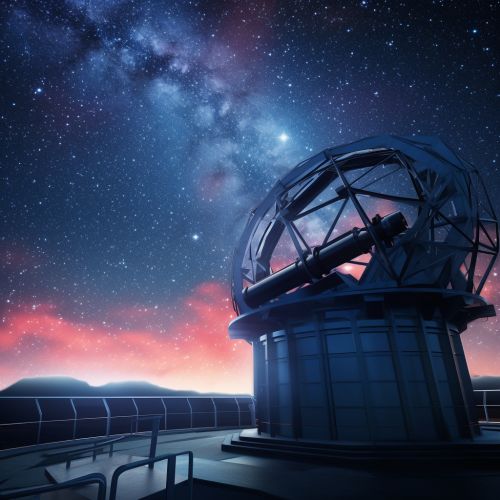Infrared astronomy
Introduction
Infrared astronomy is a branch of astronomy that studies celestial objects in the infrared (IR) spectrum. The discipline involves the use of special telescopes equipped with infrared detectors and spectrographs to collect data about the universe beyond the visible light spectrum.


History
The history of infrared astronomy began in the early 19th century with the discovery of infrared radiation by Sir William Herschel. However, it was not until the mid-20th century that technology advanced enough to allow for the development of infrared telescopes and detectors. The first infrared astronomical observatory, the Mount Wilson and Palomar observatories, were established in the 1960s, marking a significant milestone in the field.
Infrared Telescopes
Infrared telescopes are specialized instruments designed to detect and analyze infrared radiation from celestial bodies. These telescopes are often located in high-altitude or space-based locations to minimize the interference from the Earth's atmosphere, which absorbs a significant portion of infrared light. Some of the most notable infrared telescopes include the Spitzer, the James Webb, and the WISE.
Infrared Observations
Infrared observations can reveal information about celestial objects that is not accessible through visible light. For instance, infrared astronomy has been instrumental in the study of star formation, as young stars are often enshrouded in dust that absorbs visible light but allows infrared radiation to pass through. Similarly, infrared observations have provided insights into the structure and composition of galaxies, nebulae, and other astronomical phenomena.
Infrared Spectroscopy
Infrared spectroscopy is a key technique in infrared astronomy, used to analyze the composition of celestial objects. By studying the absorption and emission lines in the infrared spectrum, astronomers can identify the presence of various elements and compounds, providing valuable insights into the physical and chemical properties of the objects under study.
Challenges and Limitations
While infrared astronomy has greatly expanded our understanding of the universe, it also presents a number of challenges and limitations. These include the absorption of infrared radiation by the Earth's atmosphere, the need for specialized detectors and cooling systems, and the difficulty of interpreting infrared data.
Future of Infrared Astronomy
The future of infrared astronomy looks promising, with several new infrared telescopes and missions planned for the coming years. These include the European Space Agency's Euclid mission and the NASA's Wide Field Infrared Survey Telescope (WFIRST), which are expected to further our understanding of the universe in the infrared spectrum.
